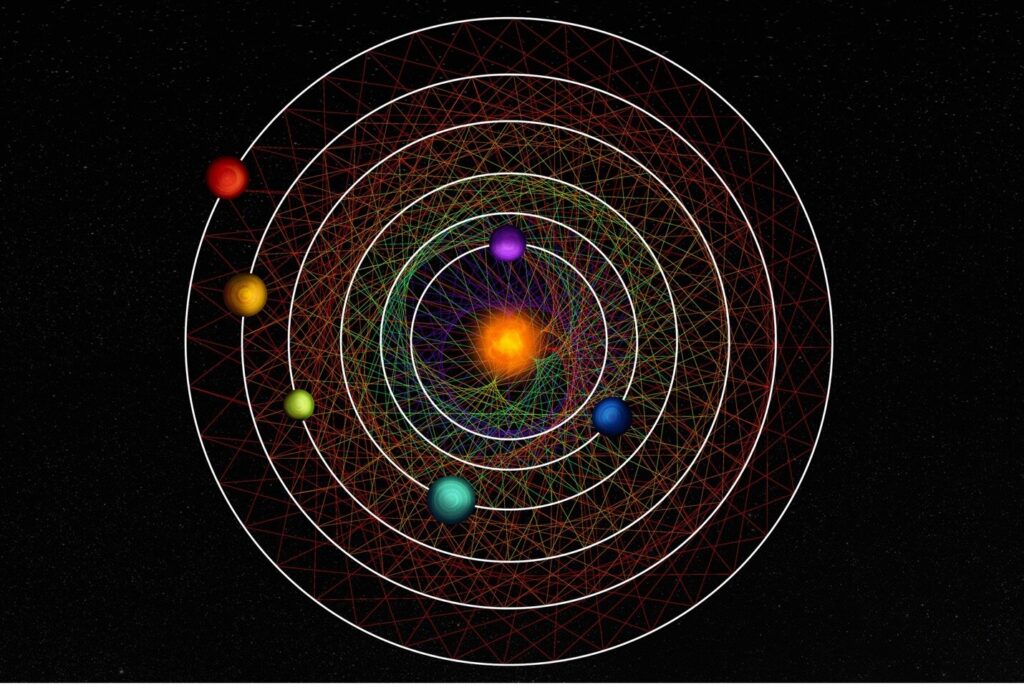A team of American astronomers announced the discovery of a rare star system with six exoplanets. What makes the find even more unusual is that they are “synchronized”: the orbits of all six exoplanets are in resonance with each other.
Star with six exoplanets
The discovery was made during the study of the star system HD110067. It is located at a distance of 100 light-years from Earth in the direction of the constellation Coma Berenices. During the analysis of data collected by the TESS and CHEOPS space telescopes, the researchers found periodic brightness changes caused by the transits of companions orbiting the star.

In total, there are six exoplanets orbiting HD11006, which radii range from 1.94 to 2.85 Earth radii. According to astronomers, all of them are mini-Neptunes. These bodies occupy an intermediate position between gas giants like Uranus and Neptune and Earth-like exoplanets.
Another interesting feature of this system is that the orbits of all six exoplanets are in resonance with each other, that is, their periods of orbit around the star correlate with each other as small natural numbers. For the first four exoplanets, the resonance value is 3:2. The first exoplanet orbits the star in 9 days, the second in 14 days, the third in 20 days, and the fourth in 31 days.
As for the outer exoplanets, they are in resonance 4:3. The period of orbit of the fifth exoplanet is 41 days, and the sixth is 55 days.
Fragility of orbital resonances
Systems with orbital resonances are of considerable interest to astronomers because they allow them to trace the evolution. Many of the multi-planet systems known to astronomers are not in resonance, but they look as if they once were.

It is now believed that the orbits of newborn exoplanets, as a rule, are formed in resonance. However, a very massive exoplanet, a close encounter with a passing star, or a giant collision can easily upset the fragile balance. According to researchers, only about 1% of the systems remain in resonance.
Therefore, HD11006 is of interest. The simulation results suggest that the orbits of all six exoplanets are stable. Most likely, they have been performing the same “dance” since their formation billions of years ago.
According to https://science.nasa.gov
Follow us on Twitter to get the most interesting space news in time
https://twitter.com/ust_magazine


